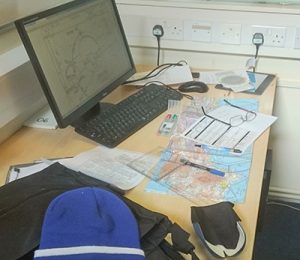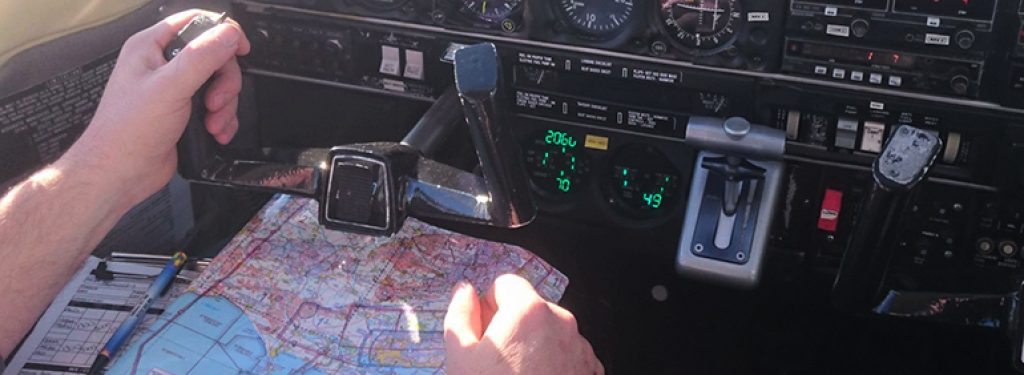
Qualifying for a Private Pilot’s License is, for many, the culmination of months of hard work, study and lessons. For some, it’s the first milestone along the way towards becoming a commercial pilot; for others, it will be the fulfilment of a cherished lifelong dream in its own right.
But what actually happens once you’re qualified to take yourself, your friends and family flying? Here we explain what you can expect on the day you take to the skies as a qualified pilot.
Let’s Go Flying
At first, most private pilots will fly a preplanned route for their aerial expeditions. On other occasions, a flight could be training (for an extra rating, or maybe a periodic check with an instructor) or a local unplanned “bimble” (this is, of course, highly technical pilot terminology).
The bimble usually involves a short, less formally planned flight in the area near the base airfield, purely for the joy and fun of being airborne, as opposed to a (also enjoyable) flight to a specific destination. Some planning is still carried out, but no specific route is flown.

In our example, our intrepid private pilot (who we shall call Bloggs) has offered to take her friends flying on a day trip, to a airfield some 100 miles or so away from her base. At typical light aircraft speeds, this is about an hour’s flight; the equivalent of flying to France from a London airfield, or perhaps the Isle of Man from the Manchester/Leeds area, for example.
Whilst Bloggs is based at a small regional airfield, complete with concrete runways, full Air Traffic Control, radar, and commuter airliners, today she is visiting a small grass strip renowned for it’s friendly club atmosphere, one well mown grass runway, and excellent cafe serving world class scones and tea. Many private pilots would insist this is an essential consideration when choosing a destination! Note that Bloggs could just as easily be based at the grass airfield.
It’s not unknown for a destination to be picked on the day, but more often it’s chosen a few days or weeks in advance. Since private flying can be very weather dependent, Bloggs is careful to explain to her passengers that planned trips may have to be flexible in terms of destination or timing. Unless Bloggs is night rated, she’ll also have to ensure she can land back at base by half an hour after sunset (night flying is not normally part of a PPL, but can be incorporated in the course, or completed later).
Bloggs will then need to book an aircraft. Some pilots will rent out the aircraft they learned in, from their flying school. This has the advantage of being (in the main) pay as you fly, and naturally is an easy, logical and familiar follow on from the training.
It’s also a popular option to be a part of a flying syndicate, or group owned aircraft. Each member of the group purchases a share, and then contributes monthly costs. Even when fuel and other hourly costs are factored in, this nearly always works out cheaper than renting.
Groups also have definite availability plus points over hiring a flying school aeroplane. Flying schools often rent their planes by the hourly slot, and stipulate a minimum number of flying hours per day. A weekend trip away, maybe with an overnight stop, therefore can be very expensive, whereas group aircraft rarely have such restrictions.
However, because flying groups have monthly or annual fixed costs, pilots will find they still spend money if they don’t fly. Outright aircraft ownership is also an option – but normally an expensive and possibly inefficient one for the average private pilot. But owning your own aircraft is also undeniably awesome.

On The Day
Having booked an aircraft in advance, on the day Bloggs begins by checking the weather. Aviation weather information in the UK is provided free of charge by those good folks at the Met Office; and whilst their website provides a superb presentation of the data, many pilot use tablet or smartphone based apps to display it. Bloggs is mainly concerned with forecasts and reports for weather fronts, in flight visibility, cloudbase and wind along her route and at her destination; each PPL will have certain operational limits, based on their experience and qualifications.
She’ll also check NOTAMs (Notices To Air -Men & -Women). Displayed on a website or again via tablet app, these are messages concerning the status of airfields, restricted areas, air displays and so on. For example; any pilot who blunders into the restricted area around a Red Arrows display because they didn’t know about it will be rather unpopular (the Reds will be broken off mid-display) – and will certainly face enforcement action from the authorities! It can also be a little embarrassing – at best – to arrive overhead your destination to find it closed, or unable to provide vital refuelling.
If weather and NOTAMS are suitable, Bloggs will prepare a ‘plog’, or “pilot’s log”. This is essentially a list of safe altitudes and calculated compass directions to fly, at a known speed, for predetermined times. These allow Bloggs to navigate with reasonable accuracy. After all, there aren’t any signposts in the sky!
Visual map reading is also used, and most pilots now use some form of GPS. This is highly encouraged in conjunction with traditional navigation techniques. In fact, it’s common to use an integrated tablet app to check weather, NOTAMs, produce a plog, and use the same app to navigate with airborne, via a GPS-enabled tablet.
Bloggs will also calculate the aircraft loading, and how much runway it will need to take off. Flying an overloaded or out of balance aircraft is not recommended! Most pilots now use electronic methods to perform these calculations, but will have been trained in manual techniques.
After completing her planning and loading up her pilot’s bag, Bloggs will be ready to go…
Check in for Part 2 as she heads to the skies!







